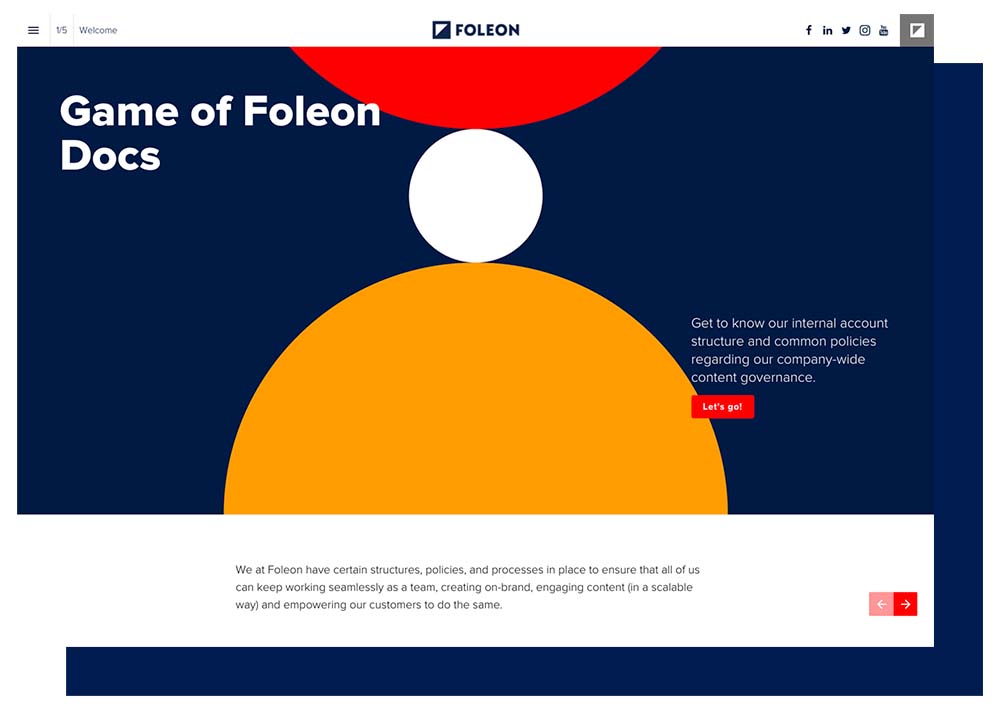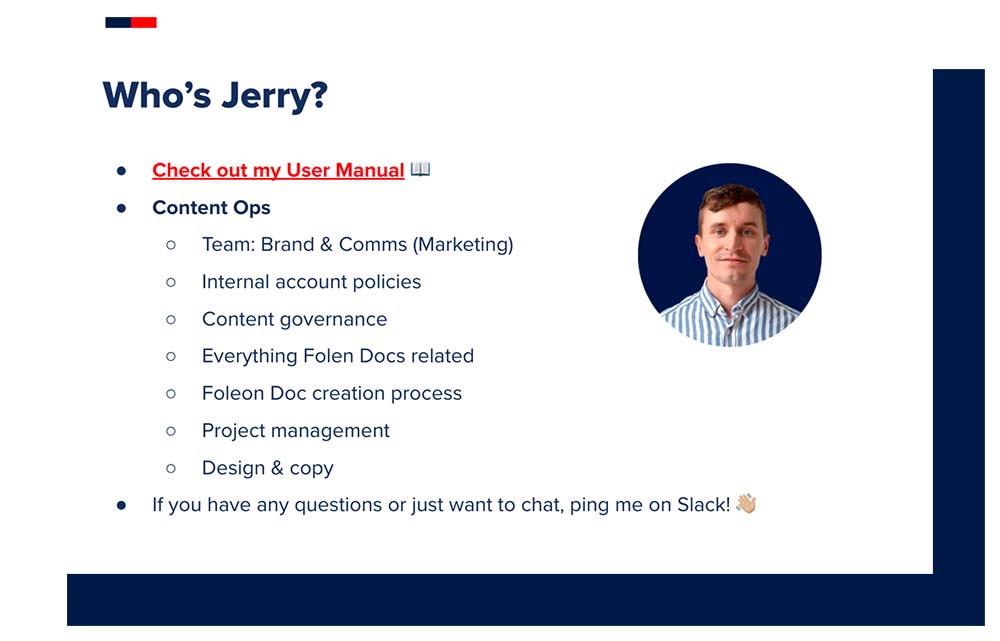When I tell people that I work in content operations, I often receive somewhat confused looks and “huh?” type of responses. Even though content operations is used — in one way or another — by all teams that create marketing content, investing in it and using it strategically is still not something that all companies do. I can’t help thinking about how much content operations contributes to our content machine and how significant an impact a lack of strategic use of it would have. But, before diving into that, let’s address those inaudible “huh?”s in the room.
In short, content operations consists of people, processes, and technologies that allow you to create content that meets your business objectives. It’s everything within your company that enables effective and scalable content creation. You can find more information about the basics of content operations in this article.
Here at Foleon, we create a lot of content. Wait, let me rephrase: We create a lot of high-quality content at high velocity. So, it’s hardly a surprise that organizing and maintaining a seamless content creation process across teams and stakeholders can be pretty overwhelming. And that’s precisely why we invest in content operations.
In this article, I’ll introduce five relatively easy yet impactful practices and tools that you can use to kick off content operations in your company.
1. Content creation workflow brings clarity and efficiency
Let’s start by discussing the importance of content creation workflow. For some, I might be stating the obvious here, but sometimes content creation processes can be overlooked or forgotten.
Having a workflow in place and taking each piece of content through it may feel like an extra step or like you’re creating a potential bottleneck, especially if your content team is small or you don’t produce much content. However, no matter how small the company, an established content creation workflow plays a crucial role in seamless content operations and synergy among (and across) teams.
A workflow is quite easy to set up, and it makes all the difference in establishing a strong process around content creation. The main benefits are uniformity and clarity across the company, defined roles and responsibilities (more on this later in this article), and a centralized overview of all the content worked on. The involved stakeholders know exactly where to start and how to build each piece uniformly without cutting corners.
Best practices to set up a workflow
There are various platforms you can use to set up a workflow. We use a project management tool Monday.com to create a customized step-by-step workflow that’s easy to adopt and follow. Each step takes the item closer to becoming a published piece of content while carefully guarding the quality along the way.
It’s also a good idea to use different stages, such as assigned, in review, and published, to help the item move forward in the workflow. Additionally, stages allow you to see the state of each piece of content in the works at a glance. If possible, automate the workflow to notify the stakeholders as the item moves from one stage to another. For example, once the piece is ready for review, you can set an automated email to the content owner to check it.
Want to hear more? Keep your eyes peeled for the upcoming, in-depth articles about content operations.

2. Quality is everything — here’s how to check it
I’m sure all of us have stumbled upon a spelling mistake, broken link, or poorly aligned image on a piece of content. Although one small mistake might not feel like a big deal, they easily add up and can critically impact the perceived quality of the content. Every little thing counts.
The fact is that especially when you empower more than just professional writers and designers to create content, it’s inevitable that sometimes the copy or visual appearance might differ from your brand’s style. Mistakes happen, and that’s fully okay (and human), but what if I told you that it’s relatively easy to avoid these mishaps?
Let’s talk about a quality check. It can be as simple as a bulleted checklist on a Google Doc (“what to check before publishing”), or more extensive, say, a step-by-step typeform that’s easy (and fun!) to click through. When you’re building a quality check, the main things to consider are the copy (grammar and messaging), design, functionality (e.g., links, responsiveness, settings), and branding.
A pre-publishing quality check can be of any shape and size. The most important things are that
a) it exists, and
b) that it serves the purpose just for you.
A simple memory-refreshing checklist can be enough if you have one person responsible for all the content creation. But when you have a bigger team and more individuals included in the process, make sure to have a comprehensive, easy-to-use, and well-documented quality check in place.
3. Who, what, and how? Define roles and responsibilities
For an idea to become a beautiful piece of content, it needs to be moved along the workflow by designated individuals. When responsibilities are appropriately assigned, content creation is efficient and easy to monitor. On the other hand, a lack of ownership leads to items getting stuck in the workflow and deadlines being missed.
Each piece of content added to the workflow must have an owner: someone to look after it and take it through the process. Give it a little push when needed. We call these designated individuals content owners (creative, right?), and each department has one.
You can also allocate the ownership per content type, for example, having someone responsible for blog articles and someone else for sales brochures. Make sure your content owners are trained, committed, and aware of their responsibilities.
4. Document and (over)communicate
So, you have all these well-thought-out content operations processes built and policies planned, and you’re ready to get them up and running. It’s time to document and communicate. By now, you should have a good overview of everything you’ve built. It’s time to create concise documentation and find the best means to distribute it to the stakeholders within your company.
Taking myself as an example: I created a Foleon Doc with our content governance guidelines and made sure to spread it across teams. It’s good to make the documentation as appealing to your peers as possible. I made the copy fun to read and the Doc visually engaging and more attractive to my colleagues.

I think it’s important to communicate new processes and changes company-wide. Even though not everyone is directly involved in content creation, it’s handy that all teams know how it works and how the ownership and responsibilities are assigned.
It’s a good idea to add the documentation and guidelines to your internal resource hub that’s easily accessible to everyone in the company. If you don’t have one yet, I can highly recommend setting it up.
5. Teach them young — include policies in the onboarding
“You can't teach an old dog new tricks,” goes an old and extremely ageist saying. Even though I find this inaccurate, there’s truth in the idea of us learning more quickly and effectively when we’re fresh and new. So, when you want to enforce policies and processes within your company, it’s essential to incorporate this education in the onboarding process.
I regularly host onboarding talks to all new hires so I can teach them the basics of our content policies and guidelines. It’s good to keep this session interactive and encourage your audience to ask questions. You can customize the training per department, making it more relevant and efficient for the new team members attending. An onboarding talk is an excellent opportunity for the new hires to get to know you, which makes it easy for them to ping you with a question in the future.

Smart and scalable content creation
Utilizing content operations practices is smart (read: essential) for any company that creates content. The five simple things discussed in this article are easy to set up and will get you up to speed with content operations in no time. You can design the processes and allocate responsibilities in any way that’s convenient to your organizational structure and strategy.
The most important thing is that each piece of content that goes through a content creation workflow (set it up!) has an owner responsible for the quality of that piece. For this process to work, everyone involved needs to understand why it’s in place and how it works, so don’t forget to document every step of the way and (over)communicate. And, ta-da, your content is always in check and created in a uniform, on-brand way.
Now, it’s time for this piece of text to move toward the quality check and get ready for its journey of morphing into a stunning, shareable blog article.


.png)
